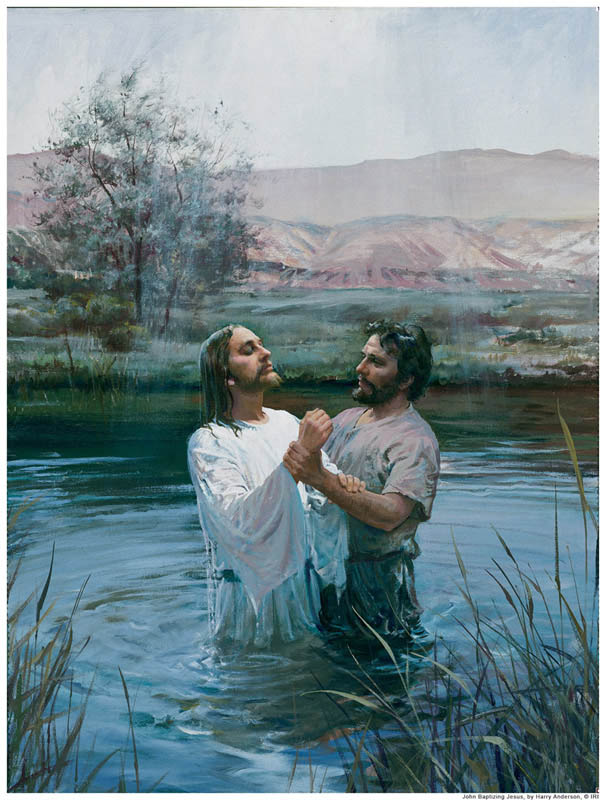Before a person can become a member of The Church of Jesus Christ of Latter-day Saints, whose members are sometimes called Mormons, he or she must be baptized.
This is because Jesus Himself taught that baptism is a requirement for salvation:
 Jesus answered, Verily, verily, I say unto thee, Except a man be born of water and of the Spirit, he cannot enter into the kingdom of God (John 3:5).
Jesus answered, Verily, verily, I say unto thee, Except a man be born of water and of the Spirit, he cannot enter into the kingdom of God (John 3:5).
Baptism is so essential that even Jesus Christ was baptized. Although baptism is considered an ordinance that washes away sin, Jesus had no sins. He was perfect. For this reason, his cousin John protested His request for baptism, suggesting that Jesus should be baptizing him instead. Jesus persisted, however, and was baptized. Why did Jesus insist on baptism when He was perfect?
Baptism is a commandment. It is not up to us to decide we don’t need a required ordinance. If we are commanded to do something, we must do it. Jesus obeyed commandments faithfully, keeping the Law of Moses and all other commandments. He also knew that Christians throughout history would follow the example He set and so He was baptized by immersion, showing us how to be baptized and making it clear we must be baptized ourselves.
Baptism is also an opportunity to make our first covenants with God. A covenant is a two-way promise between God and us, with God choosing the terms. When we do our part, God will do His. At baptism, we covenant to take on ourselves the name of Jesus Christ, to accept Him as our Savior, to keep the commandments, and to prepare to live with God again. These start us on a path that will help us return home to God’s presence someday.
Baptism requires some preparation on the part of the person about to join the Church. Mormons allow those eight and older to be baptized. Mormons believe that children have the ability to pray to God for a personal testimony of God and Jesus Christ and not just depend on the testimonies of others. They receive instruction in how to do this both at home and at church and are expected to pray for that testimony prior to their baptisms.
Those older than eight who wish to convert must also learn about the church and pray for a personal testimony. They are also expected to repent. (Mormons do not believe children younger than eight require repentance because they are too young for God to hold them accountable for their mistakes.)
Repentance involves recognizing the sin, feeling true sorrow for it, stopping the sinful action, making restitution as far as possible, and apologizing to God and all others who were hurt or involved in any way. Once a person is baptized, those repented of sins are washed away and forgotten by God. Of course, no one is perfect, and so repentance is an ongoing process.
“Repentance precedes baptism, and baptism is the ordinance by which former sins are washed away. The washing in water symbolizes the purification of our soul, just as bathing in water cleanses our bodies from the grime and dirt of everyday living and makes us feel refreshed again. But baptism symbolizes something more. It is the beginning of a new life. Just as the resurrection purges the dross and imperfections of mortality and renews and perfects the body, so baptism cleanses the soul from sin and prepares a person to lead a better, more perfect life in the future. We can see how apt Paul’s simile was in which he compared baptism with death and the resurrection…. Without the nourishment provided by the atonement of Jesus Christ, baptism would remain just a dead form. Baptism alone cannot save us. Works alone cannot save us. Baptism must be accompanied by the granting of the Holy Ghost, which makes us spiritually alive just as God breathed into Adam the breath of life when he was created. Without the Holy Ghost, we would be spiritually stillborn and not have power to enter the presence of God the Eternal Father. (Theodore M. Burton, “To Be Born Again,” Ensign, Sep 1985, 66)
